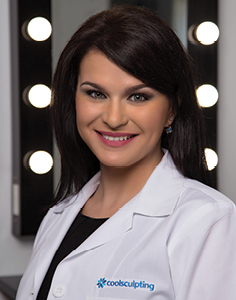No Cure For Melasma Or Sun Damage, Yet Symptoms Can Be Controlled.
Summer is around the corner, but our epidermis may be thankful if we use sunscreen and try not to tan. The sun and its intense heat, in fact, can be the mortal enemy of the epidermis, that outermost layer of skin that is in the forefront in the war against sun damage and melasma, which is typically characterized by dark patches on the skin. According to the American Academy of Dermatology, 90 percent of those affected are woman. No one knows exactly what causes melasma, however experts agree that exposure to sunlight is considered to be a major factor and have found certain commonalities among individuals with this condition which may explain why melasma is primarily found in women.
As skin problems go, melasma is pretty common. It mainly affects the face although it can be found on other areas of the body that were exposed to the sun. Estrogen, pregnancy, and birth control pills have also been associated with this condition. Individuals with darker skin tend to be more affected by melasma than those with lighter skin. It is that exposure to sunlight that affects the epidermis cells that control pigment.
In addition to protecting the skin by limiting its exposure to the sun with clothing and sunscreens, there are a variety of procedures that have been prescribed, although the effects of some of these treatments may be questionable. To get rid of those brown patches caused by melasma, lasers may be used but the results are often temporary, having to be frequently repeated and, in some cases, may actually make matters worse. Your doctor can prescribe specially formulated creams containing hypopigmenting agents like hydroquinone and others that can lighten the brown patches on the skin. Other options include stripping away the top layers of the skin to help lighten the patches. These include chemical peels, dermabrasion, and microdermabrasions.
It is important to remember that there is no current procedure that guarantees the absence of melasma forever or that the patches will be completely lightened. And while you may need to return to your aesthetician for follow-up treatments, it is more important that you follow skin treatment guidelines, especially those regarding sun exposure, to minimize melisma’s return. If you are pregnant, you should discontinue any of the above procedures because of possible risks to the fetus. Take the same precautions if you are breastfeeding.
 Olga Solovienko
Olga Solovienko
Licensed LME Clinician, Medical Laser Technician
Astoria Laser Clinic & Med Spa
2106-B Gallows Road
Vienna, Virginia 22182
(703) 992-9290
www.astorialaserclinic.com






